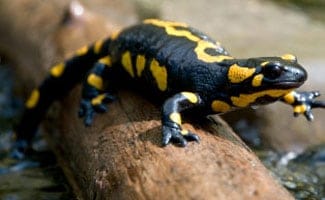Get to Know The Western Lowland Gorilla
 The Western lowland gorilla is one of the most recognized wild animals around the world; this incredible subspecies is native to Africa; however they can be found worldwide in zoo exhibits. It is known for being an incredibly intelligent creature with an incredible amount of power packed into its solid body. As a result of various factors impressing upon their homelands they are considered critically endangered.
The Western lowland gorilla is one of the most recognized wild animals around the world; this incredible subspecies is native to Africa; however they can be found worldwide in zoo exhibits. It is known for being an incredibly intelligent creature with an incredible amount of power packed into its solid body. As a result of various factors impressing upon their homelands they are considered critically endangered.
Size, Habitat and Behavior
The adult male Western lowland gorilla can stand as tall as 5 feet 7 inches and can weigh around 400 lbs and this is the smallest of the gorilla subspecies! In the wild it makes its home in a variety of African nations including Angola, Cameroon, Gabon, Equatorial Guinea, the Central African Republic, the Congo and the Democratic Republic of the Congo. The Western lowland is a rather isolated species of gorilla and lives throughout the rainforests and heavily wooded areas of their habitats making it particularly difficult for biologists to estimate the population of this endangered species accurately.
When in the wild the Western lowland gorilla lives in family groups which are ruled by one alpha male that oversees the entire social structure. The dominant male is often referred to as the silverback due to the silver hair that runs down the center of his back. The silverback gorilla can become particularly aggressive especially when challenged by other male gorillas. Within the average troop there is usually the leading silverback male, a variety of females, the children of the troop and a few young and subordinate males. As the silverback ages and as the younger males grow one of them may challenge the silverback for his place as the alpha member of the pack.
The silverback Western lowland gorilla is responsible for taking care of his troop and that includes everything from reproducing with the females of the troop to organizing basic daily activities. The basic daily activities of the troop generally change very little and include eating, nesting and, if required, moving the home of the troop to another location. Collecting food is usually one of the first activities within the troop and is done shortly after sunrise when it is still cool enough to move around and search for food. Searching for food is usually contained within the immediate area of the home base of the troop.
Western lowland gorillas require a lot of food to maintain their large bodies with bigger males of the troop requiring some 20 lbs of food a day. The bulk of the gorilla’s diet is comprised of vegetation such as wild roots, wild celery, fruit, shoots, and tree bark and pulp. They have also been known to eat insects but generally stick with their vegetarian diet.
Video of Western Lowland Gorilla
Always on the Move
While the Western lowland gorilla sticks close to home while hunting, their home changes frequently in order to maintain a sufficient food supply on which the troop can feed. Sticking together on the move as well as when close to home ensures that the troop is safer and under the protection of the large silverback male. While they are generally sedate and nonaggressive by nature when threatened by other gorillas or by other creatures they can become particularly aggressive. The silverback Western lowland gorilla is the strongest member of his troop and will generally ensure the safety of his troop by confronting the enemy and pounding his chest, he may also charge, throw items, stand on his hind legs and roar in order to make himself even bigger and more intimidating to the predator. These threats are not limited to predators and challenges from outside gorillas; however, and can also be seen when other gorillas in the troop challenge the position of the older silverbacks.
Reproduction and Development
The smaller family troop of Western lowland gorillas does not experience the expanded growth of some other mammals that choose to live in family groups. The female does not become sexually mature until they are nine or ten years old and even then they gestate for almost nine months (another near human characteristic of these amazing creatures). The average Western lowland gorilla produces just one baby per pregnancy; however, twins occasionally make an appearance. After giving birth a female will generally not become pregnant again for another four to five years. Where the mother may seem particularly large she is incredibly gentle with her tiny baby which weighs in at around four pounds. The baby gorillas are dependent upon their mothers for up to three years and during their younger years ride on their mothers back and cling to her fur for protection. Once they turn six months old these infants are generally able to walk on their own but still depend upon their mothers for their milk. By the time they are three years old; however, children are less tied to their mothers and feed on the same foods as the rest of the troop.
While the younger and less independent infants are so dependent upon their mothers, once they hit the age of three they become more independent – although certainly not more responsible.
Comparison to Human Children
Biologists compare children Western lowland gorillas (aged 3 to 6 years) to human children in their behavior in that they focus on play and eating rather than the troop responsibilities of the older adults. Commonly young children gorillas will have a variety of playmates within their age range but often they will also try to lure older gorillas in to play as well. As they age the young adults begin to leave their troop to seek mates or other groups of Western lowland gorillas to join. Joining a new troop can be particularly difficult for males due to the existence of a dominant male in all troops. Becoming part of a troop either means being a subordinate male within the troop or challenging the silverback of the troop which can lead to injury and sometimes even death. For the male everything centers on the ability to reproduce and for many they do not receive this chance until they reach around 15 years old simply as a result of competition from other male gorillas. The average Western lowland gorilla in the wild is believed to live to 35 years old.
Life in Captivity
The life of the Western lowland gorilla changes dramatically when it is raised in the captivity of a zoo rather than in the wild. The age of sexual maturity hits earlier than it would in the wild and gorillas in zoos are frequently able to reproduce before they are seven years old. Additionally gorillas in captivity are able to live to the much more respectable age of 54 years old.
Why are these changes taking place in captivity? There are many factors that are changed when a gorilla is brought in to captivity. Not only does the captive gorilla receive an introduction to a mate without having to fight other males for the opportunity to reproduce but it also receives a steady diet and regular health checkups. In the wild injury from a challenge to a silverback by another male can result in severe life threatening injury. This is just one situation that is avoided by raising a Western lowland gorilla in captivity, as two male silverbacks will never be contained together and therefore this situation will be completely avoided.
Raising a Gorilla in the Wild vs. in Captivity
Are there disadvantages to raising Western lowland gorillas in the wild? While certain factors change in the life of the gorilla when it is raised in captivity other factors are also influenced and these things can have a more negative effect on the captive gorilla. Western lowland gorillas are naturally travelers used to traveling in order to feed on the ripest fruits of the season, they are also used to living in groups and having the freedom to come and go in the wilderness that surrounds their home base as often as they please.
In captivity they are free only to roam as far as their designated area allows them to, and their groups within the compound are controlled by the captive animal’s handlers. In general the groups in captivity are much smaller than the natural family groups that form in the wild and once the younger members of the group are old enough they are moved from their groups to other locations – generally in other zoos.
Disorders and Consequences of Captivity
While captivity can have positive and negative effects on the life of the gorilla it is the only way for biologists to ensure the survival of the species. Zoos that incorporate Western lowland gorilla exhibits make a concerted effort to incorporate routines in to the lives of their gorillas that help to detract from the “missing” elements in captive living. These types of routines tend to revolve around intellectual stimulation. The Western lowland gorilla is an exceptionally intelligent creature and without intellectual stimulation they can become bored as well as depressed with their inability to travel and move through the rainforests of their natural habitat.
Researchers have long praised their intelligence and not only are daily activities constructed for captive gorillas to ensure intellectual stimulation but on occasion facilities also include special tasks such as teaching sign language and teaching them to utilize computers to communicate with their handlers. Not only do these types of activities enrich the lives of the captive gorillas but they also serve to provide a basis of communication between two species that would otherwise be unable to communicate.
Crucial Importance of Survival
While having Western lowland gorillas in captivity allows for advances in communication between species it also serves a much more important purpose – conservation of the species. The Western lowland gorilla is under a two pronged attack and this amazing creature is bordering extinction. As a result of deforestation in their native habitat, these creatures are being driven out of their homes and finding it increasingly difficult to survive in their natural lands. They are also under attack from hunters who seek the Western lowland gorilla for their meat as well as their skins. The gorilla meat is commonly sold in commercial trade as “bush meat” and while it is illegal to hunt these giant creatures the bush meat trade still goes strong. The fur, skulls and other parts of the gorilla are sold to trophy collectors or medicine men who utilize parts of the animal in rituals and “cures” for a variety of afflictions.
Despite the label of being a critically endangered species the Western lowland gorilla still suffers at the hands of greedy businesses men and hunters who seek to profit from the destruction of this gentle species which shares so much of its DNA with us. Unfortunately the men and women who seek to profit from the destruction of this species are not people who will ever be able to realize the importance of this species both to its natural environment as well as to human beings. Not only does the Western lowland gorilla serve as an integral part of its ecosystem by spreading seeds through their dung as they travel through the rainforests, but this noble creature also serves as a link to primitive humans.
By eliminating the Western lowland gorilla humans are actively participating in the elimination of their ancestors and destroying any possibility that future genetic research can reveal the answers to mysteries that surround the origin of man. It is not just the ecosystem and the future of research that would suffer from the loss of this beautiful creature; however, but future generations would miss the opportunity to observe one of the most incredibly humanlike creatures that has ever lived as a result of the sheer greed of hunters and businessmen.



